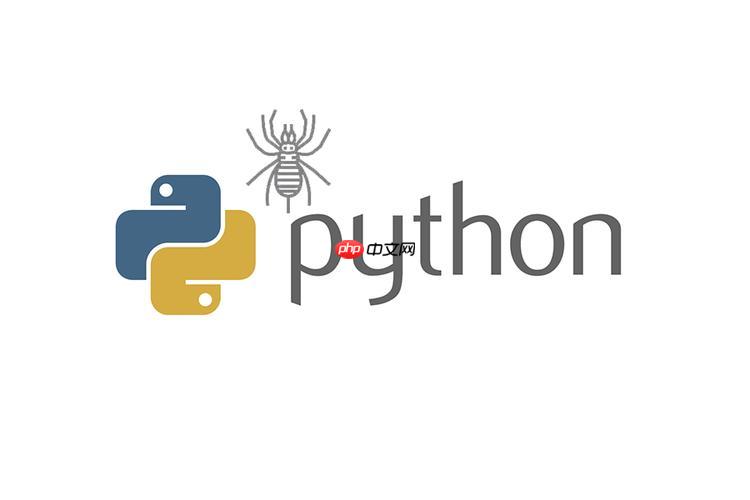构建一个python区块链的核心数据结构包括block和blockchain两个类:1. block类包含index、timestamp、data、previous_hash、nonce和hash属性,用于定义单个区块的结构和完整性;2. blockchain类包含chain列表、difficulty难度值,并提供create_genesis_block、get_last_block、proof_of_work、new_block和is_chain_valid等方法,用于管理整个区块链的创建、验证与扩展。这两个类通过哈希链接和工作量证明机制协同工作,确保区块链的不可篡改性和安全性,其中哈希函数(如sha256)为每个区块生成唯一指纹,而工作量证明通过要求哈希值满足前导零条件来防止恶意篡改,整个实现基于加密算法与数据结构的巧妙组合完成。

构建一个区块链,在Python里其实没有想象中那么遥不可及,它更多的是对一些核心数据结构和算法的巧妙组合。本质上,我们是在搭建一个由加密链接的区块组成的、不可篡改的分布式账本。这个过程会涉及到区块的定义、哈希加密、以及确保链条安全的“工作量证明”机制。
要用Python实现一个基础的区块链,我们首先得定义“区块”这个核心概念。一个区块,它得包含自己的索引(index)、创建时的时间戳(timestamp)、存储的数据(data,比如交易信息)、前一个区块的哈希值(previous_hash),以及一个“随机数”(nonce),这个nonce在工作量证明中至关重要。每个区块的完整性和连接性,都依赖于它自身的哈希值,这个哈希值是通过区块内的所有数据(包括nonce)计算出来的。
接着,我们需要一个“链”来把这些区块串联起来。这个链本质上就是一个存储区块的列表。每当有新的交易或数据需要记录时,我们就创建一个新区块,并把它添加到链的末尾。为了保证链的不可篡改性,新区块的
previous_hash
previous_hash
立即学习“Python免费学习笔记(深入)”;
工作量证明(Proof of Work,PoW)是确保区块链安全性的关键一环。它要求创建新区块的矿工(或节点)必须解决一个计算难题,通常是找到一个特定的nonce,使得区块的哈希值满足某个预设的条件,比如哈希值以若干个零开头。这个过程是计算密集型的,但验证起来却非常快。这种机制有效地阻止了恶意节点轻易篡改或伪造区块,因为这需要巨大的计算能力来重新计算所有受影响区块的PoW。
在我的理解中,构建一个Python区块链,最核心的无非就是两个类:
Block
Blockchain
Block
index
timestamp
data
previous_hash
nonce
hash
用Python来表示,它可能看起来像这样:
import hashlib
import time
class Block:
def __init__(self, index, timestamp, data, previous_hash, nonce=0):
self.index = index
self.timestamp = timestamp
self.data = data
self.previous_hash = previous_hash
self.nonce = nonce
self.hash = self.calculate_hash() # 初始哈希,可能在PoW后更新
def calculate_hash(self):
# 确保所有数据都被编码成字节串
block_string = f"{self.index}{self.timestamp}{self.data}{self.previous_hash}{self.nonce}".encode('utf-8')
return hashlib.sha256(block_string).hexdigest()而
Blockchain
chain
Block
difficulty
create_genesis_block()
get_last_block()
proof_of_work(index, timestamp, data, previous_hash)
new_block(data)
proof_of_work
is_chain_valid()
这些数据结构共同协作,构成了区块链的骨架。我发现,真正理解它们的相互作用,比单纯记住概念要重要得多。
哈希函数,在区块链里扮演着“指纹”的角色。我们通常会用到SHA256这样的加密哈希算法。它的特点是,对于任何输入数据,它都会生成一个固定长度的、独一无二的输出字符串(哈希值)。哪怕输入数据只改动一个字节,输出的哈希值也会天差地别。这正是区块链不可篡改性的基石。
比如,在
Block
def calculate_hash(self):
# 确保所有数据都被编码成字节串
block_string = f"{self.index}{self.timestamp}{self.data}{self.previous_hash}{self.nonce}".encode('utf-8')
return hashlib.sha256(block_string).hexdigest()这里需要注意,
f-string
encode()
而工作量证明(PoW)则是为了控制区块的生成速度,并防止双重支付等恶意行为。它的核心思想是:找到一个满足特定条件的哈希值。这个条件通常是哈希值以特定数量的零开头。零的数量越多,难度就越大。
这是在
Blockchain
new_block
class Blockchain:
def __init__(self):
self.chain = []
self.difficulty = 2 # 比如,哈希值前两位必须是'00'
self.create_genesis_block()
def create_genesis_block(self):
# 创世区块没有前一个哈希,通常设为'0'或空字符串
self.chain.append(Block(0, time.time(), "Genesis Block", "0"))
def get_last_block(self):
return self.chain[-1]
def proof_of_work(self, index, timestamp, data, previous_hash):
nonce = 0
while True:
# 构建一个临时的字符串来计算哈希,模拟新区块的结构
test_string = f"{index}{timestamp}{data}{previous_hash}{nonce}".encode('utf-8')
current_hash = hashlib.sha256(test_string).hexdigest()
if current_hash.startswith('0' * self.difficulty):
return nonce, current_hash # 返回找到的nonce和对应的哈希
nonce += 1
def new_block(self, data):
last_block = self.get_last_block()
index = last_block.index + 1
timestamp = time.time()
previous_hash = last_block.hash
# 执行工作量证明,找到有效的nonce和哈希
nonce, current_hash = self.proof_of_work(index, timestamp, data, previous_hash)
# 创建新区块,并直接赋值计算好的哈希
block = Block(index, timestamp, data, previous_hash, nonce)
block.hash = current_hash
self.chain.append(block)
return block这个调整后的逻辑更合理。PoW就是为了找到一个
nonce
以上就是Python如何构建区块链?基本数据结构实现的详细内容,更多请关注php中文网其它相关文章!

每个人都需要一台速度更快、更稳定的 PC。随着时间的推移,垃圾文件、旧注册表数据和不必要的后台进程会占用资源并降低性能。幸运的是,许多工具可以让 Windows 保持平稳运行。

Copyright 2014-2025 //m.sbmmt.com/ All Rights Reserved | php.cn | 湘ICP备2023035733号